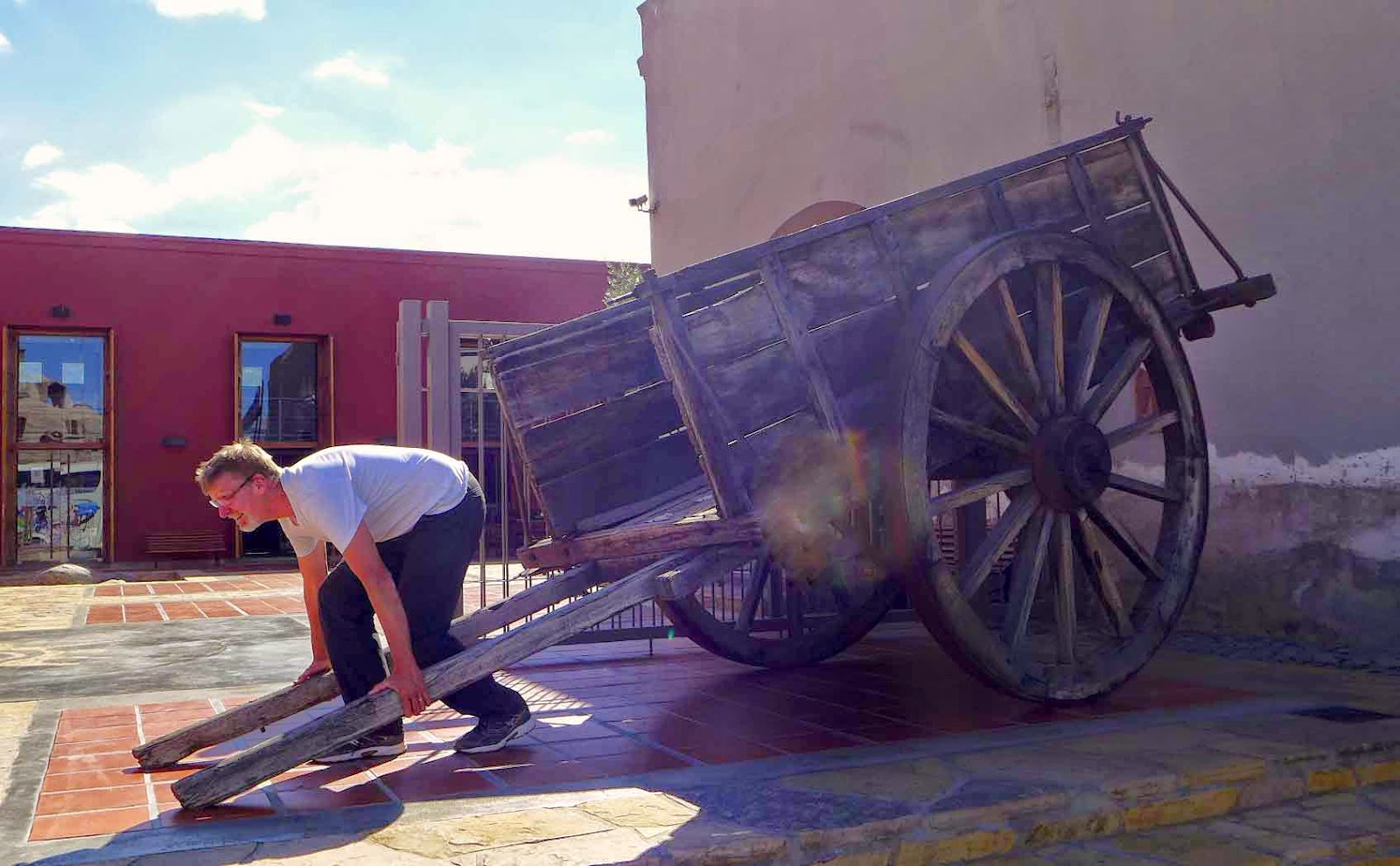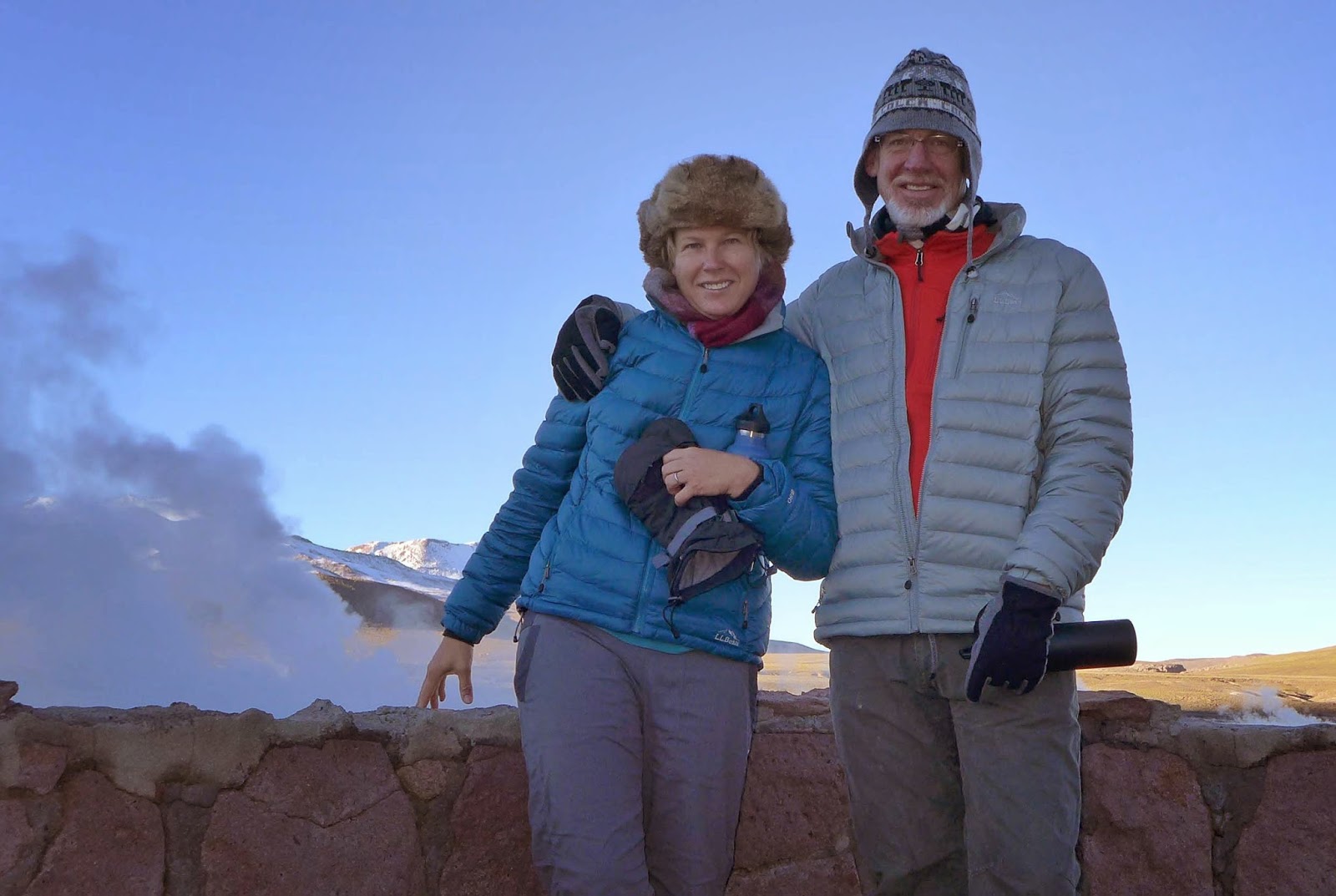We spent two weeks in Cafayate, the heart of Argentina’s white wine region.
Apparently, wine tasting is a popular hobby.
The local vineyards grow a great deal of grapes to make
Torrontes, a crisp, fresh white that is wonderful. We visited a vineyard and
sampled its wares.
While this sounds luxurious, we spent two weeks working on a
new website and advertising campaign to change Smith Restoration Sash into SRS
Hardware. The website should be up and running in July and ads will be
appearing in all your favorite old house magazines soon!
We left some time for sightseeing in Cafayate. Who know
there we bicycles built for three?!?
 |
| We need a third person! |
The town has a wine museum where we put Justin to work
 |
| This is the WHUT? house |
We facing the South American winter which is less than
ideal in a two-wheel drive rig with a broken heater, so we've decided to head
to the UK and follow the nice weather (both weeks) and hit the continent after
summer break.
We need to get Westy to Europe and our best shipping option is Montevideo, a huge port in Uruguay’s capital. We cut short the visit to Chile and Argentina, leaving plenty for another visit, and made a beeline for Uruguay. In case you are curious, the center of Argentina is the longest, flattest drive we’ve taken since crossing north Texas. These people really, really like to plant corn. This sign was a welcome sight
Montevideo is a much larger city than we realized but it has
a nice coast line and park.
We took in the sites for only one day before heading up the
coast. A few sights:
 |
| One of the last old houses on the street |
 |
| Lighthouse near the Naval base |
 |
| Justin found our tow car! |
Half of Uruguay lives in Montevideo and the rest live in
rural and agricultural areas. The country is well organized, clean and friendly.
Heck, even their cows are well organized.
 |
| Must be union cows.... |
The coastline is really lovely and reminiscent of New
England with large rocks, long white sand beaches and good sized waves. Small
boats dot the shorelines and they use small winches to pull them up the beach.
We camped along the shore for a few nights. Our propane tank is empty which is good because we are
not supposed to ship it with propane. An empty tank means that we will be
cooking dinner on the hibachi for a few weeks. Justin is good about making the
fire for dinner, of course he gets plenty of help....
Where the beach meets the Eucalyptus trees, families of
small parrots live in large communal nests. They spend their days zipping
overhead, chattering and bringing more sticks to their nest. They are very loud
but very funny.

 |
| The nest, with one little parrot entering the nest |
We are spending four days at a Swiss owned campground, surrounded by German, French and Swiss retirees. Good practice for the European leg of the journey. Here we are preparing Westy for the long voyage and are packing for a month of hiking around Ireland. On April 28th we fly to Dublin, next blog from the Green Isle!






















































